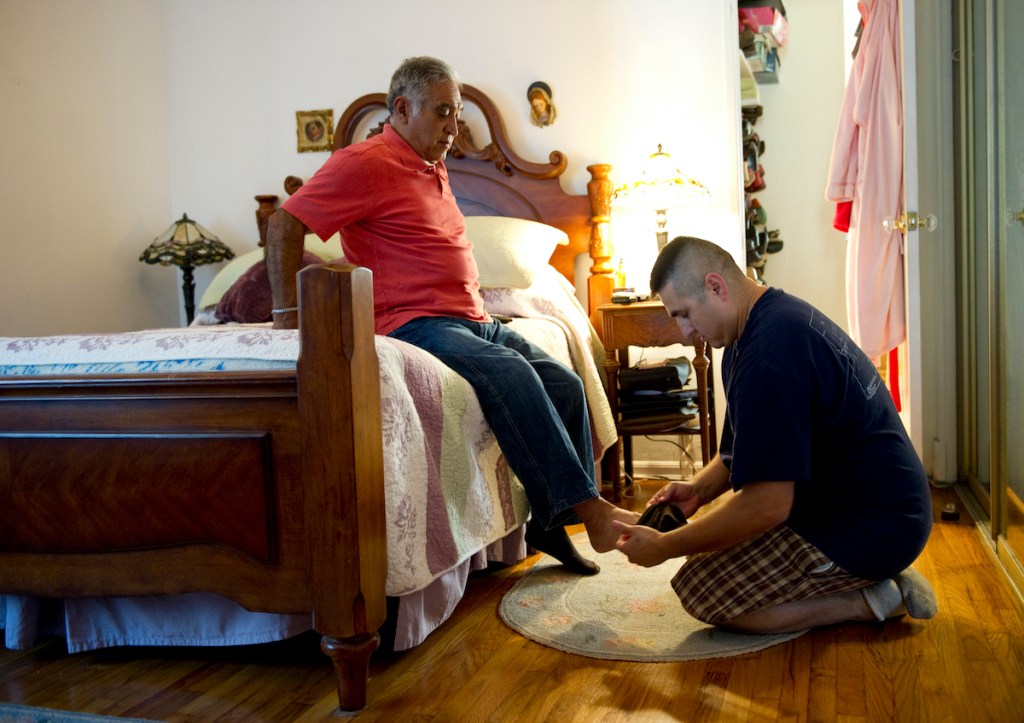Alzheimer’s disease is already the third-leading cause of death in California — behind heart disease and cancer — but the most recent projections released by the Alzheimer’s Association and the California Department of Public Health predict that the number of people in the state with the disease is expected to double by 2040, and even more drastically in Hispanic communities.
The newly released update to the report showed that the 660,000 individuals estimated to have Alzheimer’s in 2019 may balloon to over 1.5 million by 2040, and one in six Californians over the age of 65 may develop Alzheimer’s. Although California’s population is projected to grow 16 percent by 2040, the number of people living with Alzheimer’s will grow by 127 percent.
Hispanic and Black communities will bear the brunt of this growth, according to the report, with the number of Hispanic Californians living with the disease expected to more than triple in the next 20 years. Currently, it is estimated that Latinx communities make up 20 percent of the estimated 8,000 cases in Santa Barbara County.
Kathryn Cherkas, Director of Programs for the Central Coast Chapter of the Alzheimer’s Association, said that it’s important to understand and address the factors that go into these results, and respond by providing resources to the communities that will be needing them the most in the future.
Santa Barbara’s Promotores Network is one of the leading resources for Alzheimer’s education in Latino communities, offering free educational webinars taught in Spanish in partnership with the Alzheimer’s Association.
“It’s truly one of the best healthcare resources available,” Cherkas said. “What they do — they are addressing these gaps. They look; they speak; they are the people that they serve.”
The Alzheimer’s Association Central Coast chapter will also be starting the county’s first Spanish-speaking support group, starting on January 22.
Sign up for Indy Today to receive fresh news from Independent.com, in your inbox, every morning.
According to the Alzheimer’s Association statistics, a third of Hispanic Americans report that they have experienced discrimination when seeking health care, and half of non-white caregivers said they have experienced discrimination when navigating health-care settings for their care recipient. Typically, only the primary caregiver is included throughout the treatment process, which can leave the close-knit families out of the loop.
“Latinx families, they would want more people involved in the process,” Cherkas said. “That’s not something our western health-care system does.”
Since most Latinx caregivers will be family members, when individuals come in to consult with the Alzheimer’s Association, Cherkas said it always involves an emphasis on the caregivers, who are faced with a steep learning curve and a life adjustment in caring for a loved one.
“That’s normally the first priority — the caregiver,” she said. “They’re in the trenches.” Cherkas said that 100 percent of people will either know someone who has been affected or themselves be affected by the disease, referencing Rosalynn Carter’s quote: “There are only four kinds of people in the world: those who have been caregivers, those who are currently caregivers, those who will be caregivers, and those who will need caregivers.”
Caregiving should also be a team effort, Cherkas said. “The neighbor who notices they left their door open, everybody in the apartment complex — you’re a part of a care network,” she said.
Typical early warning signs for Alzheimer’s and dementia include memory loss that disrupts daily life, difficulty completing familiar tasks, confusion, new problems with words in speaking or writing, or withdrawal from work or social activities. Cherkas encourages getting checked as early as possible, because the only available treatments are most effective early in the progression.
The disease is incurable and progressive, and each case presents itself in different ways. Cherkas said that it’s important to evolve the treatment as the symptoms progress. “Everyone’s journey is different,” she said. “It’s okay if they don’t wanna do the things they did before.”
The Alzheimer’s Association’s research branch is the third-largest in the world in the subject, with only the U.S. and Chinese governments spending more in studying the disease. For more info, visit the Alzheimer’s Association website.
Support the Santa Barbara Independent through a long-term or a single contribution.

